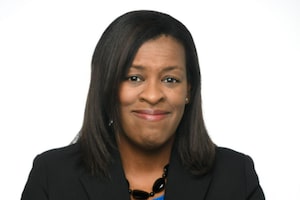
One advisor says clients recognize that part of their fees cover the high-touch, personalized service they receive.Johnny Greig/iStockPhoto / Getty Images
Are you a professional financial advisor? Register for Globe Advisor and then sign up for the weekly newsletter on our newsletter sign-up page. Get exclusive investment industry news and insights, the week’s top headlines, and what you and your clients need to know.
Advisor fees are often top of mind for clients in times of volatile markets and economic downturns. But some of the advisors on The Globe and Mail and SHOOK Research’s second annual Canada’s Top Wealth Advisors ranking say that’s not the case because their clients know and value what they’re paying for, which goes well beyond investment performance.
Recent data from the Investment Funds Institute of Canada in October back this up. More than 80 per cent of investors surveyed believe their advisor is worth their fees.
“We are not questioned in a down market because we have a value proposition that clients know and understand,” says Catherine Laurin, senior portfolio manager at BMO Nesbitt Burns Inc. in Montreal.
“We are in regular contact with our clients, which has been key to our long-term successful relationships. We get involved quite substantially in their lives from comprehensive financial planning and estate planning.”
They know there’s a cost to that, but that great advice pays off, she adds.
Ms. Laurin says that comprehension of fees comes down to transparency when onboarding clients. At that time, the matter is discussed with clients extensively and they sign off on a fee disclosure form. Her practice moved to a fee- or asset-based compensation model in which advisors are paid a percentage of a client’s investible assets. In return, clients receive portfolio management and financial planning services.
Meanwhile, Kurt Rosentreter, certified financial planner (CFP) and portfolio manager at Manulife Securities Inc. in Toronto, says if a client came to him concerned about fees, he would view it as his failure of not properly outlining all of his practice’s services and the various fee options available to them.
He says he can be compensated in several ways – fee-based, like Ms. Laurin offers, an hourly rate for clients who want advice only or just desire feedback on a specific financial situation, or a flat fee or fees specifically for investment counsel.
“We get clients to relate the fees to what we’re actually doing for them,” he says. “I find that flexibility on the types and levels of fees just makes you more competitive.”
Mr. Rosentreter says most of his clients prefer the fee-based model and they recognize that includes not just portfolio management but the detailed financial planning his team provides. As part of his plan, he includes executive compensation strategies, real estate consulting, and eldercare planning – things that can take up a lot of time and work.
‘Tracking’ work done for clients
He runs his practice similarly to an accounting firm in which fee haggling isn’t a thing (Mr. Rosentreter is a chartered professional accountant). He says his systems track not only the time spent with each client but also the completed actions. He points to a hypothetical client who had three 90-minute in-person meetings, a four-hour estate plan review, an insurance analysis, and 72 e-mails exchanged with the advisor.
“When you can provide a client that level of transparency, fee discussions go away,” he says. “This is a profession and they recognize the need to pay us for our time and expertise.”
His clients also recognize that part of their fees cover the high-touch, personalized service they receive. Mr. Rosentreter has nine team members.
“Clients don’t end up in voicemail here,” he says. “We have some clients who we talk to every week of the year. In a world of automation, little things like a live voice matter.”
Clients also appreciate the hard costs of running an advisory practice, which include salaries, rent, technology, and insurance.
The evolution of fees
That said, the fees clients pay evolve at different stages of their lives. Mr. Rosentreter likes to custom price each client relationship depending on their circumstances. A 40-something client who wants to retire in 20 years who’s a small business owner and has a mortgage and young kids will pay more than an older, retired, debt-free client who just requires minimal retirement cash flow planning.
“It’s not going to be anywhere near the workload [for those retired clients], so we’ll bring their fees way down,” he says.
Chris Stephenson, CFP and investor specialist at Steadyhand Investment Funds Inc. in Vancouver, has a unique fee program. The more assets a client has, the less they pay. And the longer the person has been a client, the lower the fee. In the latter case, the fee reduction starts at the five-year mark.
The firm’s brainchild about rewarding veteran clients with lower fees came out of personal frustration with consumer programs offering deals to newcomers but nothing to incentivize loyal subscribers.
“It’s a good strategy for short-term gain but bad for long-term trust,” Mr. Stephenson says. “At our firm, a lot of the effort is spent getting to know somebody and their situation. The lion’s share of getting a plan and portfolio set up is in the first few years. Quite simply, it’s the right thing to do.”
He’s surprised more firms don’t go with this model because as the fees get lower and lower, clients may be less likely to leave, he adds.
Steadyhand’s fees cover clients’ access to their investments and advice pertaining to portfolio construction. While he does conduct a holistic assessment of his clients, including insurance and estate planning, those services are referred to other professionals.
For more from Globe Advisor, visit our homepage.
 Deanne Gage
Deanne Gage